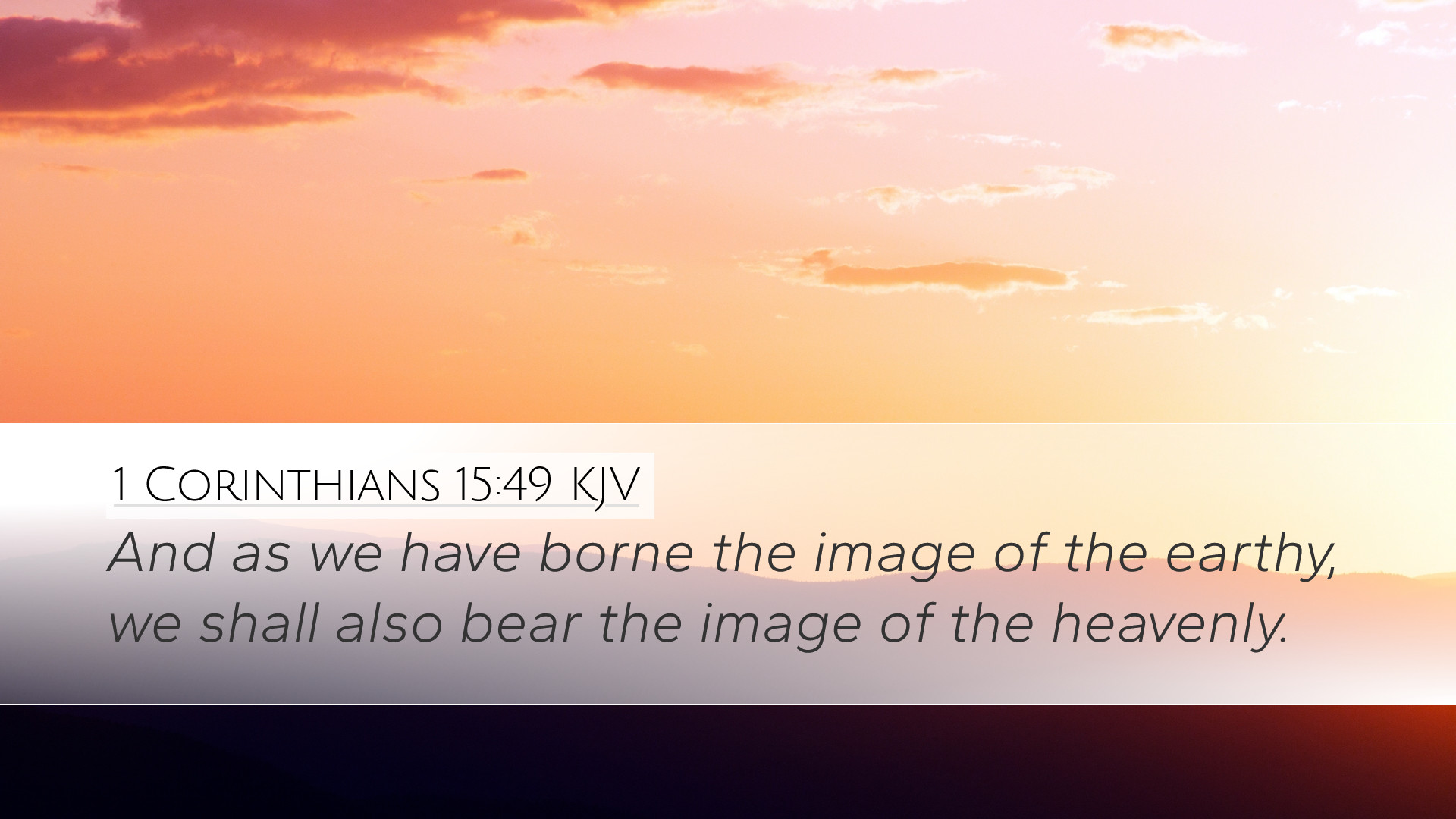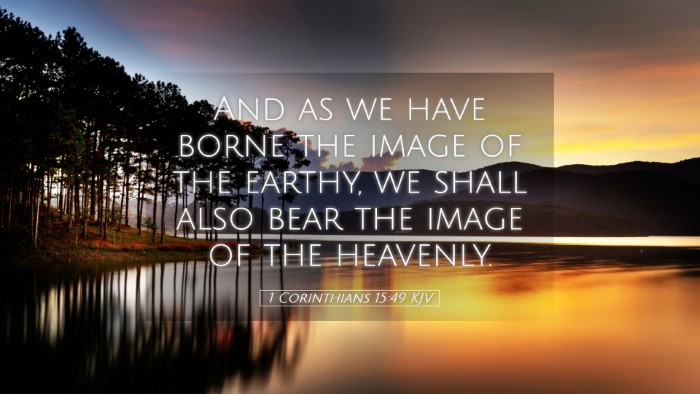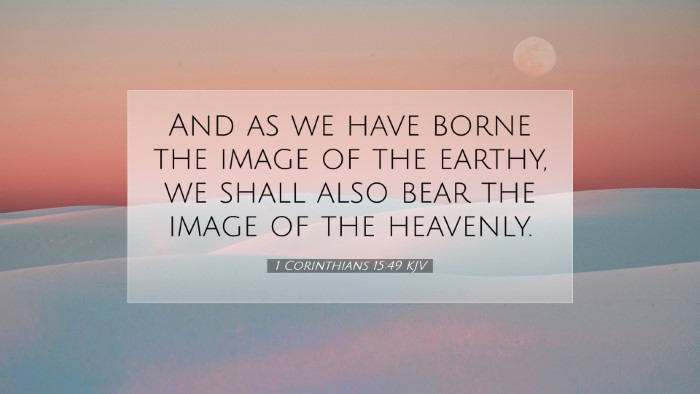Commentary on 1 Corinthians 15:49
Verse: "And as we have borne the image of the earthy, we shall also bear the image of the heavenly." (1 Corinthians 15:49)
Introduction
This verse serves as a critical transition in the Apostle Paul’s teaching about the resurrection of the body, contrasting the earthly and the heavenly. This commentary draws insights from renowned public domain theologians, including Matthew Henry, Albert Barnes, and Adam Clarke, offering a comprehensive understanding for pastors, students, theologians, and scholars alike.
Contextual Background
In the broader context of 1 Corinthians 15, Paul is addressing doubts about resurrection within the Corinthian church. He emphasizes both the resurrection of Christ and the future hope for believers. Verses preceding 49 elaborate on the nature of the resurrection body and how it relates to the earthly human experience.
Exegesis and Theological Insights
This verse is pivotal in illustrating a fundamental doctrine: the transformation that believers undergo from a perishable state to one that bears the image of the heavenly.
- Earthly Image:
Matthew Henry notes that the "image of the earthy" refers to our present, mortal existence characterized by sin and decay. This image reflects our physical attributes and our sinful nature, inherited from Adam, who is the first man.
- Heavenly Image:
Contrastingly, the "image of the heavenly" signifies the glorified, spiritual body that awaits believers. Albert Barnes explains that this transformation culminates in the final resurrection, where believers will share in the divine nature and glory of Christ, reflecting His perfection.
- Assurance of Transformation:
Adam Clarke emphasizes that the promise made in this verse assures believers of their future state. Just as all humanity bears the earthly image, in due time, those who are in Christ will surely bear His heavenly image. This provides immense hope and assurance regarding the resurrection and eternal life.
Theological Implications
1 Corinthians 15:49 presents critical implications for Christian theology:
- Doctrine of Resurrection:
This verse reinforces the doctrine of bodily resurrection, an essential framework for Christian hope. Paul’s assertion provides believers confidence in life beyond death—affirming that our physical state is not the end.
- Christological Significance:
Henre’s commentary highlights that the image of Christ is a transformative principle for believers. Just as Christ was raised, so too will believers be raised in like manner, enabling them to fully participate in the divine life.
- Ethical Living:
This transformation echoes throughout the believer's life, prompting a call to ethical living. If we are to bear the image of the heavenly, our lives should reflect that hope—and exemplify the values of God's kingdom even amidst earthly struggles.
Applications for Believers
The residue of the preambles from Henry, Barnes, and Clarke calls believers to reflect on several applications:
- Hope in Suffering:
Believers are encouraged to hold fast to the hope of eternal life amidst trials. This verse reassures that earthly sufferings are temporary and that a glorious future awaits.
- Identity in Christ:
Understanding our identity as those who will bear the image of Christ impacts how we engage with the world today. Our present lives should strive toward holiness and transformation reflective of our future state.
- Encouragement for the Community:
This verse offers encouragement for the Christian community to support one another in faith, reminding them of the ultimate victory over death through resurrection.
Conclusion
In summary, 1 Corinthians 15:49 is a profound reminder of the transformation that lies ahead for believers. The insights from Matthew Henry, Albert Barnes, and Adam Clarke illuminate the promises of scripture concerning our future resurrection and identity in Christ. As we endure earthly challenges, we are reminded that our true identity is rooted in the heavenly, where we will perfectly reflect the image of Christ.


